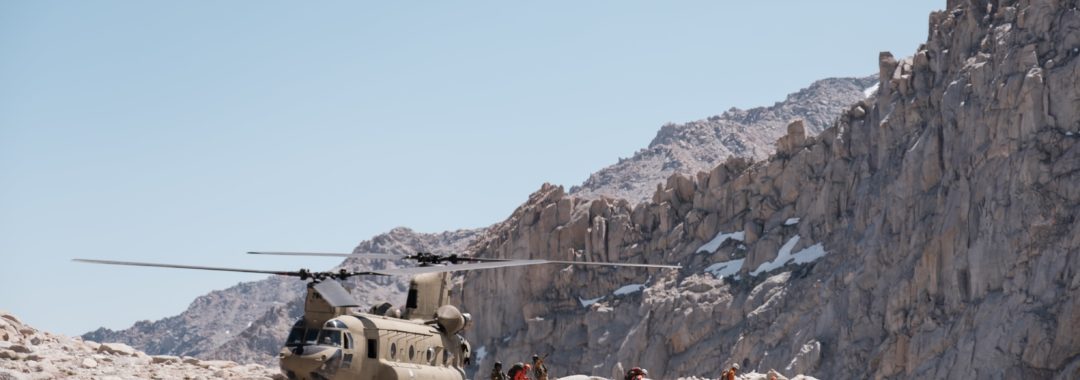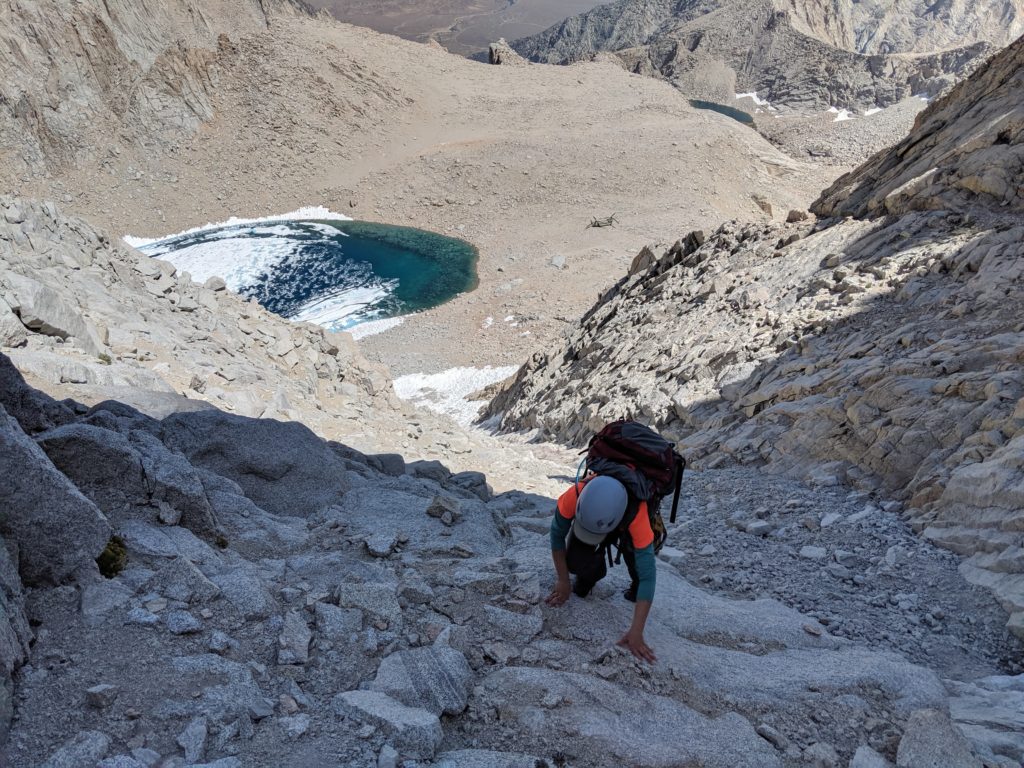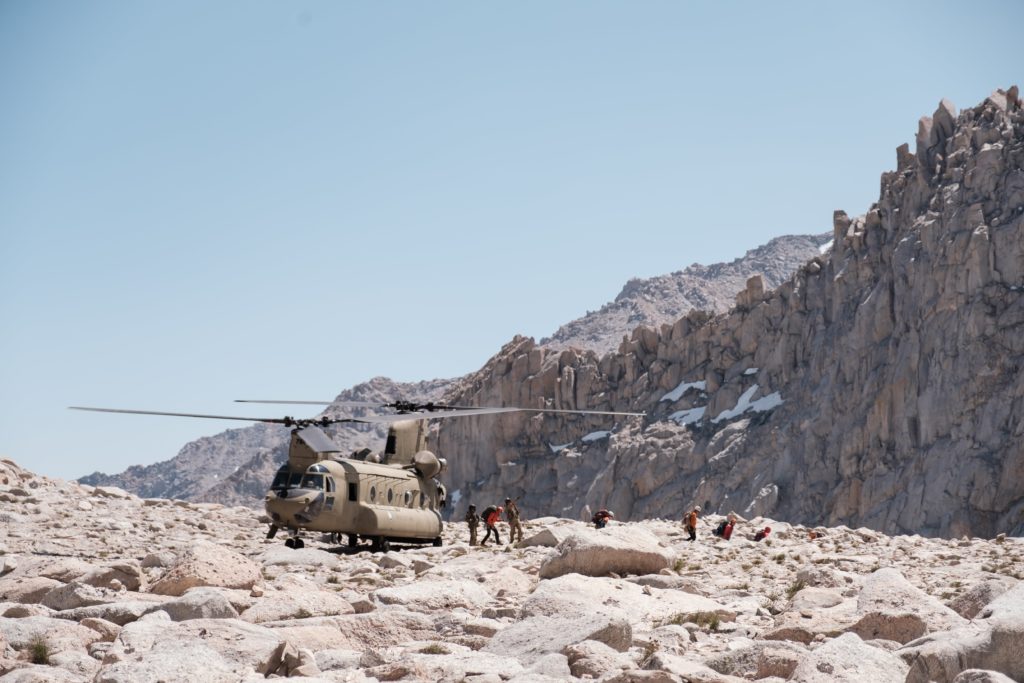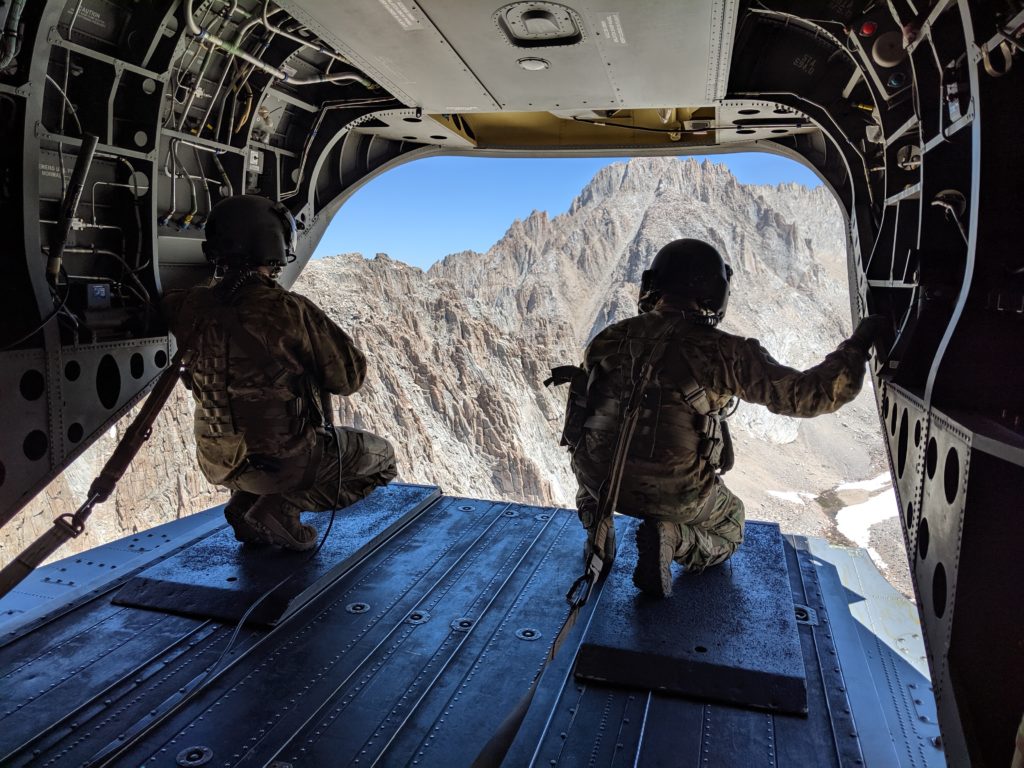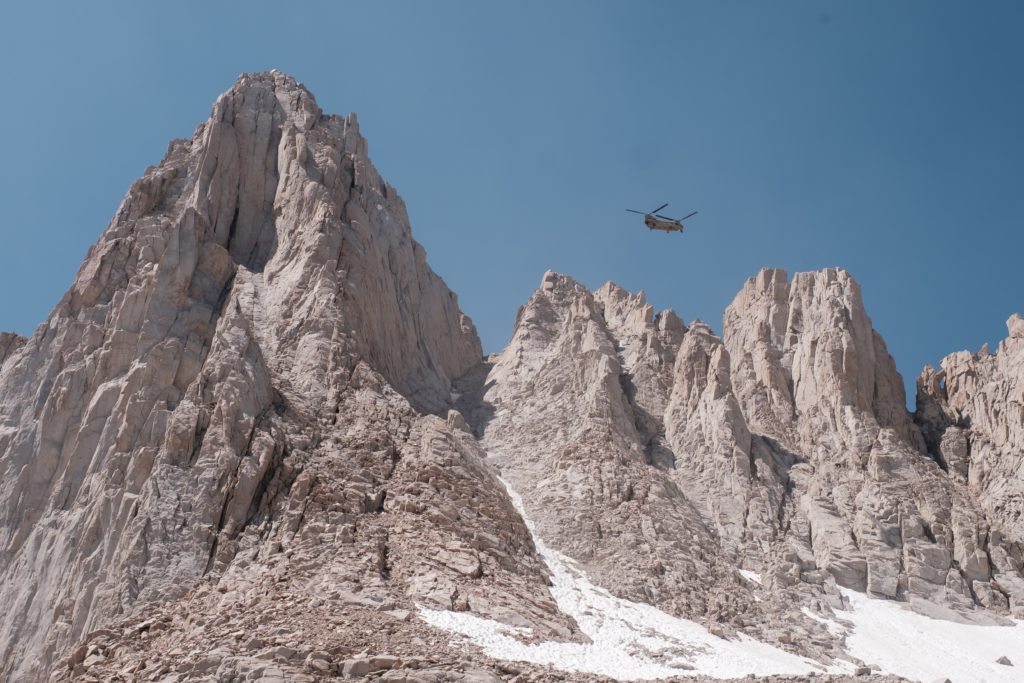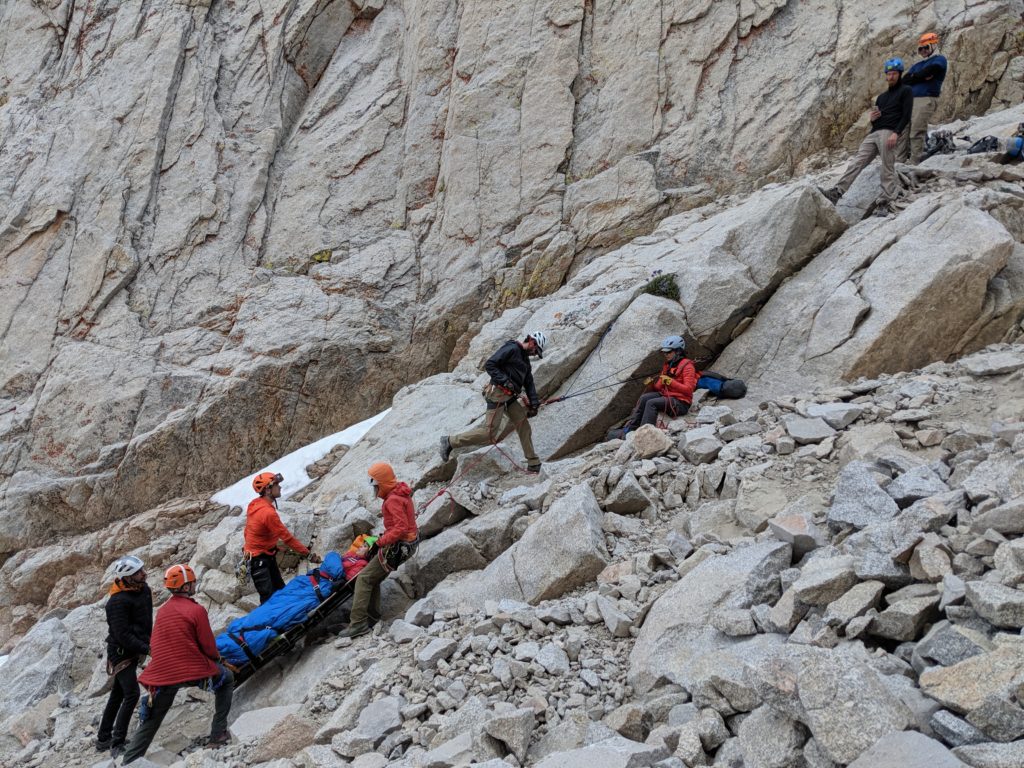In the late afternoon of August 24, 2019, a 27-year-old female was descending the Mountaineer’s Gully on Mt. Whitney after summiting the peak via the same route with her climbing party. At about 13,900 feet, near the top of the gully, the female dislodged an approximately 2,000-pound, three-foot-diameter boulder which rolled over her entire body, striking her face and fracturing her left tibia-fibula in addition to numerous soft-tissue injuries. Due to the time of day, high altitude, and confined terrain, helicopter resources were unable to respond to the mission that day, and the patient and her party spent the night at the location of the accident. The party was able to shuttle supplies to the patient from their camp at Iceberg Lake, keeping her relatively warm and stable through the night.
On the morning of August 25, California Army National Guard Chinook Helicopter Schooner 16 arrived from Stockton to transport seven Inyo County Search and Rescue (SAR) team members to the scene. One SAR member was inserted via hoist near the patient’s location to assess and stabilize her injuries. The remaining six SAR members were inserted 1,000 feet below the patient and climbed to her location. The patient was packaged into a litter and the SAR team executed a single-rope, low-angle lower of approximately 250 feet to a location where the gully was wide enough to permit a helicopter hoist. The patient was extracted via vertical hoist and transported to the hospital.
Analysis
Loose rock is common throughout the Sierra Nevada, particularly after heavy winters like that of 2018-19. Inyo SAR received numerous reports during the summer of 2019 about substantial loose rock in the Mountaineer’s Gully, an extremely highly traveled, narrow route constrained by steep walls that make it difficult to avoid falling or rolling rock. Climbers in confined terrain with other parties should wear helmets and communicate with one another about loose rocks.
This incident underlines the importance of choosing reliable partners and preparing for the unexpected. Thanks to her party’s excellent patient care and ample overnight gear, the patient survived a night out at 13,900 feet with serious injuries.
This incident also demonstrates the limitations of rescue response. Calls for rescue that occur late in the day, at high elevations, in bad weather, or in confined terrain entail serious safety concerns for helicopters and ground crews that may significantly delay the arrival of assistance. Parties should be prepared to shelter in place for up to 24 hours after initiating a call for rescue.
